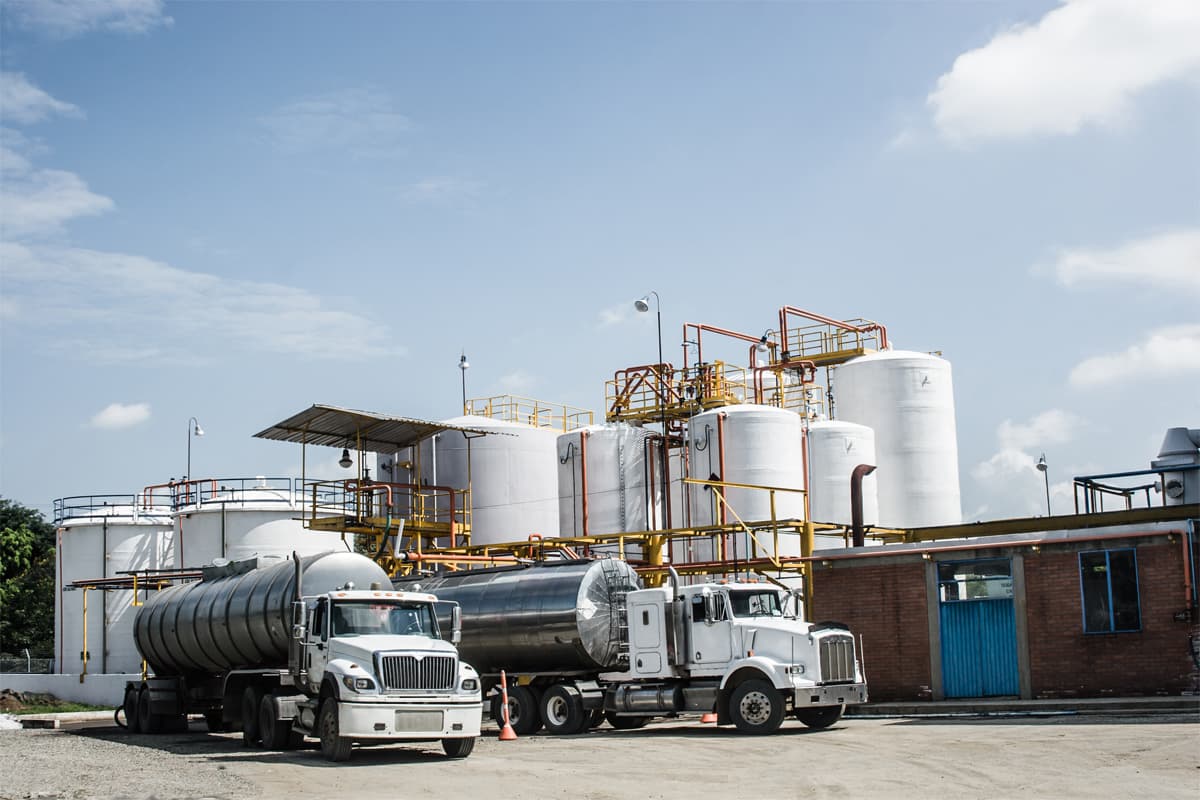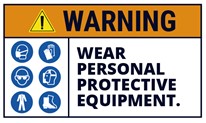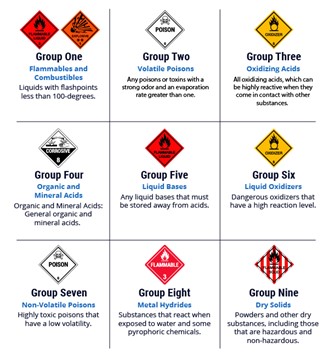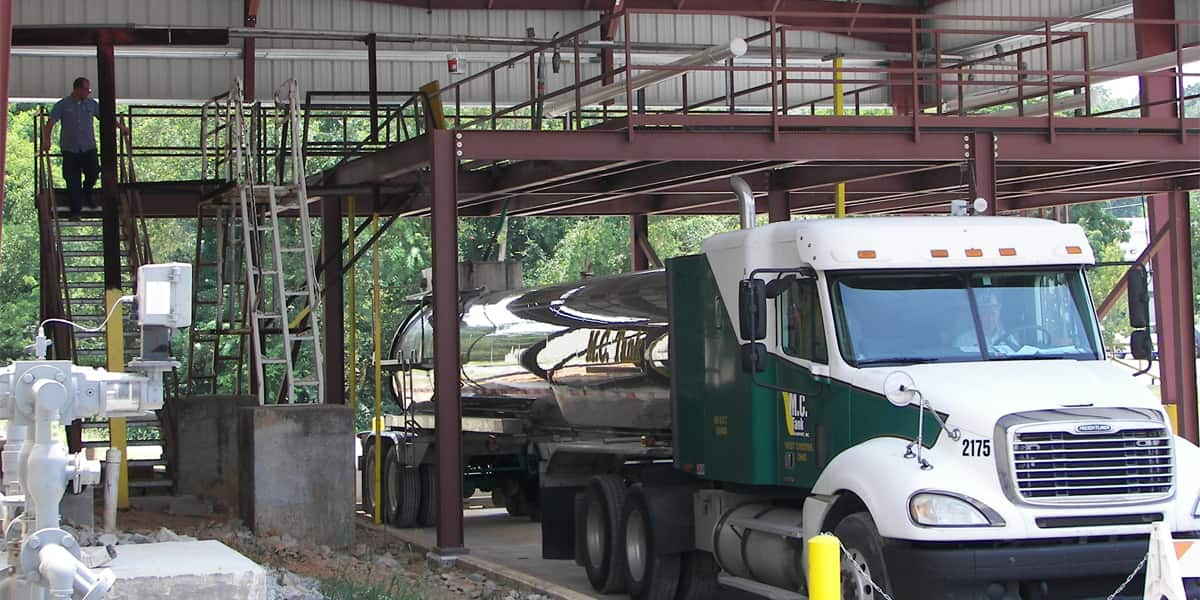
Chemical Storage Containers: Ensuring Safe Transport and Storage
When transporting chemicals, you must prioritize safety; otherwise, you can risk health, environmental and explosive repercussions. Prior to transferring substances from one location to another, there are numerous guidelines that must be considered and followed appropriately.
Understanding these principles is about more than just ensuring your load arrives safely. It can mean protecting your employees from senseless injury, avoiding contamination risk and reducing the possibility of costly fines.
In short, the process is about saving your business time and money while preventing an accident. Here’s what you need to know about safe packaging for chemical transport and why it matters.
The Importance of Personal Protective Equipment
 It is impossible to discuss safely transporting chemicals without first covering personal protective equipment (PPE). The very basics that must be used include chemical-resistant gloves, eye protection, steel-toe shoes and lab coats or chemical aprons. Another critical step to ensure safety is scanning the area for any hazards, noting emergency exits and emergency equipment like eyewash stations, safety showers, and spill kits.
It is impossible to discuss safely transporting chemicals without first covering personal protective equipment (PPE). The very basics that must be used include chemical-resistant gloves, eye protection, steel-toe shoes and lab coats or chemical aprons. Another critical step to ensure safety is scanning the area for any hazards, noting emergency exits and emergency equipment like eyewash stations, safety showers, and spill kits.
What is the Correct Way to Store Chemicals in Containers?
We now have the appropriate PPE, but it is still important to talk about correctly storing substances in the right type of chemical container before we can really dive into the proper way to transport them.
While there are many different types of chemical storage totes, finding the right one for the exact type of chemical you’re transporting is crucial. Why? If you choose the wrong one, it could mean a hazardous spill or contamination of the load as a whole—two issues that are easily avoidable.
Instead, it is better to choose the right container for the exact substance’s chemical storage group.
Understanding Chemical Storage Groups
The chemical makeup of a substance determines what type of chemical vats and containers they can be safely stored in, and in turn be accurately reflected by their storage group. There are nine different classifications that consider the different hazards posed by the chemical. These include:
 What Are Chemical Storage Tanks?
What Are Chemical Storage Tanks?
A chemical storage tank is a large container that safely holds a substance to reduce the risk of spillage, contamination, or reaction.
There are multiple types of chemical storage tanks, each designed for a specific type of substance. These can range in size and style, but they are all generally anti-corrosive and designed to withstand movement and other factors unique to transporting hazardous materials.
Sizes of these storage containers can range from small enough to fit on a shelf or large enough to hold thousands of gallons of liquid at one time.
Types of Chemical Storage Containers
There are four primary types of chemical storage containers that you need to be aware of: plastic, stainless steel, carbon steel and fiberglass.
Plastic chemical storage containers are generally made from high-density polyethylene (HDPE) resin and come in numerous shapes and sizes. In some cases, they are even rated for food-grade use and can be reused depending on what chemical you’ve placed inside. This is often the most cost-effective choice for bulk chemical storage tanks.
Likewise, stainless steel storage containers are much sturdier and can last up to twenty years or more. They offer better hygienic properties than other options and are highly preferred for all types of shipping, including by motor vehicle, air, sea and rail. However, sodium hypochlorite and some acids cannot be stored in stainless steel containers as they can react with the material.
Carbon steel storage containers are used for chemical storage and transportation. They’re equally as strong and anti-corrosive as stainless steel, but they tend to cost less. That’s why they’re one of the more popular options for bulk chemical storage tanks.
Finally, fiberglass provides corrosion protection and reliability that enables a variety of chemicals to be stored including sodium hypochlorite, sulfuric acid, phosphoric acid, alum and more. Their durable, watertight design makes fiberglass storage tanks popular in the petroleum industry to store motor fuels and other hazardous liquids.
How Do You Safely Transport Chemicals?
There are risks involved in transporting chemicals, but with the right equipment it can be done safely and responsibly. In fact, companies all over the globe regularly move hazardous substances from one location to another, with some even travelling thousands of miles.
The key to successfully transporting chemicals is by pairing up knowledge with the right chemical storage tote. Here are a few tips to consider.
Tip #1: Classify Containers Based on Their Contents
When choosing the right liquid bulk tanks, make sure you classify the containers based on their contents. For example, some substances might not work well with plastic so instead you would need to opt for stainless steel or carbon steel. In addition, your tanks must be labelled according to all recommended guidelines for the type of substance in transport.
Tip #2: Segregate Mixed Classes of Substances
Choosing the right storage tank is only half of the process. You’ll also need to segregate mixed classes of substances, like acids and bases, during the transport process. This will eliminate issues or even a potential catastrophe if an accident occurs and the containers are damaged and chemicals react with each other.
Tip #3: Fully Secure Containers for the Transportation Process
Another tip is to fully secure packaging for chemical transport. When in movement, these items should not be able to come loose or even minimally jostle. Should this occur, damage to the shipping container and/or the substance inside is possible, which is why this tip is one of the most important to remember.
Tip #4: Have a Plan for Spills and Cleanup
Depending on your location and the type of chemical you’re transporting, it is important to have a plan for spills and cleanup should an incident occur. After all, accidents are always possible—even when you’ve gone above and beyond to choose safe packaging.
Tip #5 Always Have Substances Securely Stored
Even when chemicals are not currently being transported, it is important to ensure the safety of your employees by treating the hazardous substances with equal care while they are in storage. This includes making sure there is sufficient ventilation, the substances are not being exposed to heat or sunlight and they are kept away from any food or drink.
Packaging for Transporting Chemicals
Choosing the right type of packaging to safely transport chemicals is an important process as you must consider all the properties and hazards of each substance. But by understanding the different chemical storage groups and properties of chemical storage containers, you will be able to make an educated decision on the transport packaging for your next chemical shipment. In addition, follow our tips to ensure safe transport.
If you have questions about this process or want to learn about how we can help, contact us today! At Royal Chemical, we specialize in assisting companies with all of their storage container needs.
Talk to an Expert
Streamline Your Chemical Manufacturing Process
Royal Chemical’s expertise in blending, packaging and shipping can save you time, reduce costs and deliver consistent results.














